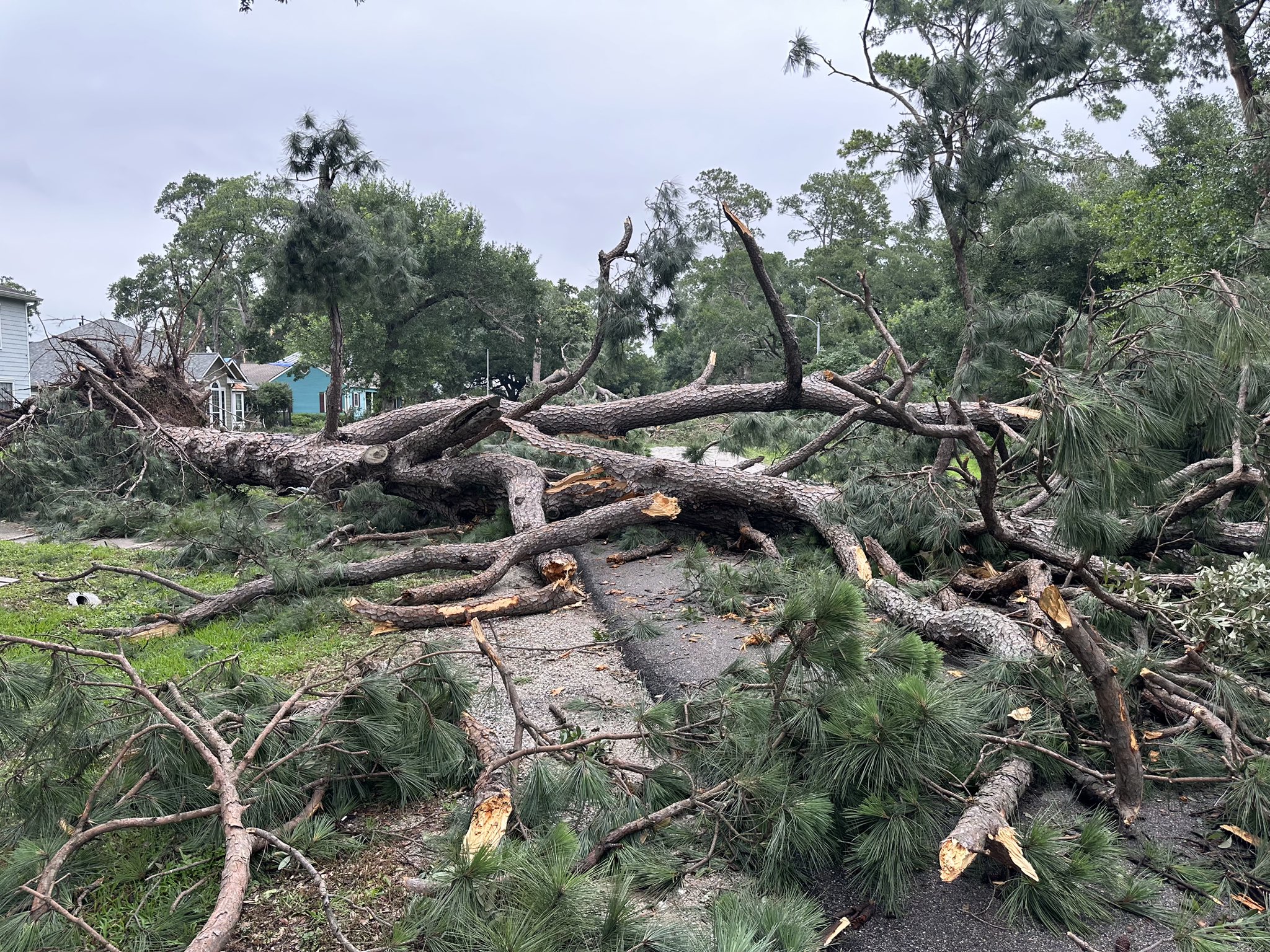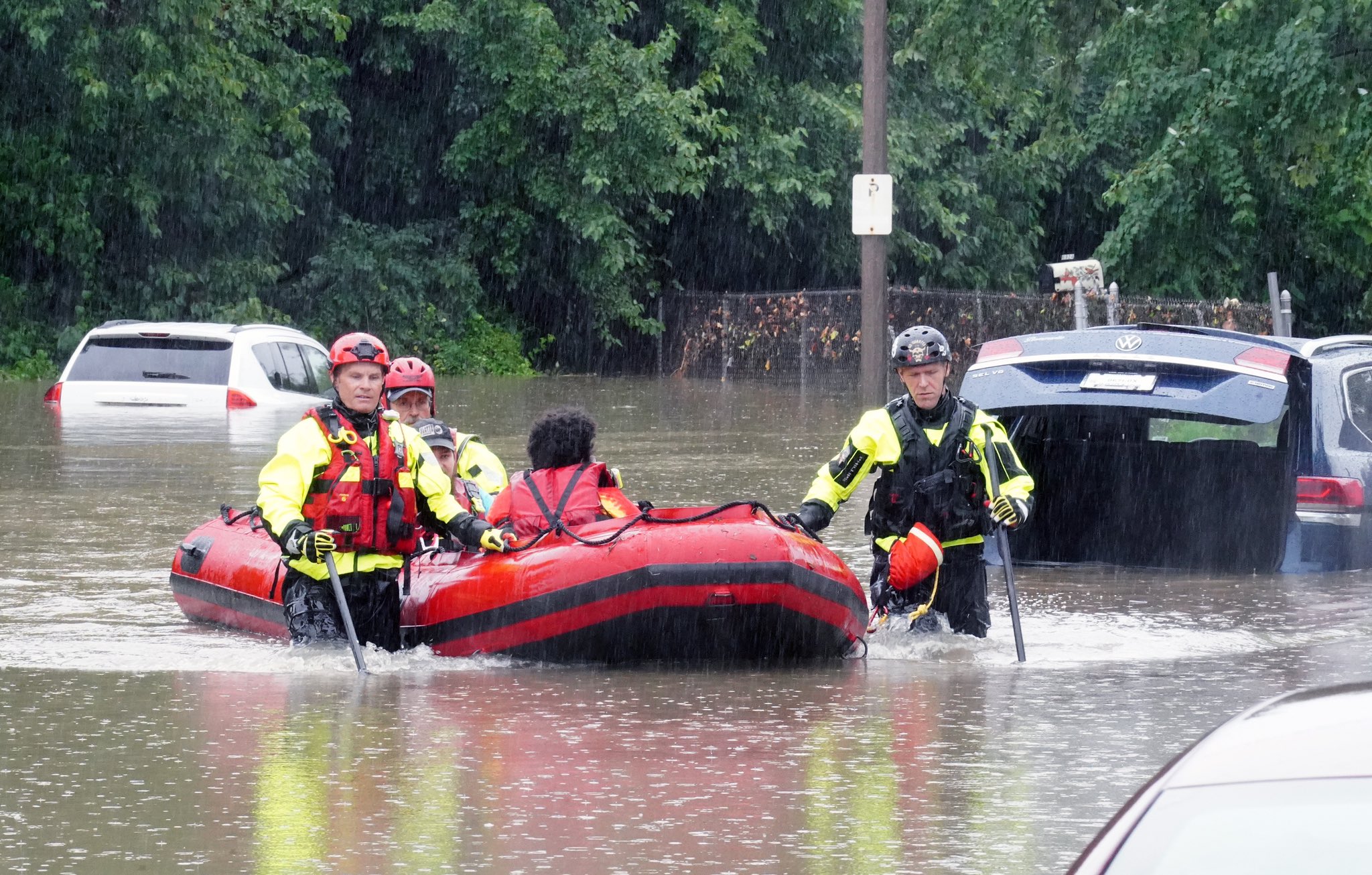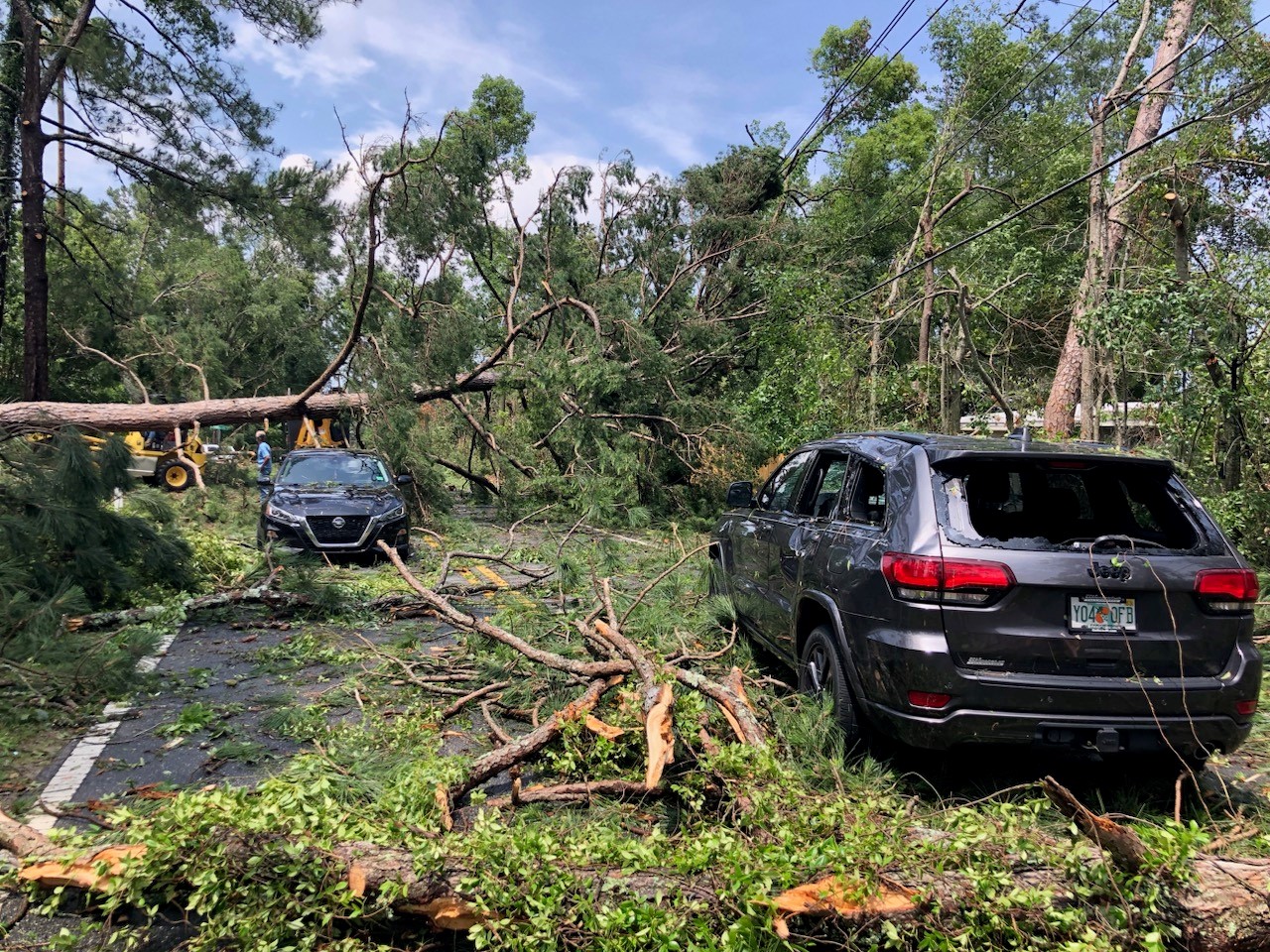What we’re watching: Weekly disaster update, May 20

Editor’s note: Due to Memorial Day and the upcoming CDP staff retreat, there will be no “What we’re watching” blog posts the week of May 27, 2024 and June 3, 2024.
We know all too well that disaster can strike anytime, anywhere in the world. Some disasters make headlines; others do not. Here at the Center for Disaster Philanthropy (CDP), we monitor the status of disasters worldwide and compile a list of the ones we’re tracking weekly, along with relevant disaster-related media coverage.
Here’s what we’re watching for the week of May 20, 2024.
New or Emerging Disasters
Tornadoes – Oklahoma, Kansas: Tornadoes were reported on May 19 in Kansas and Oklahoma. Two in Oklahoma have been assigned minimal ratings as EF-2 twisters, while three have been confirmed in Kansas. More information will be forthcoming this week in our 2024 U.S. Tornadoes disaster profile.
Severe Weather – Texas and Louisiana: May has been brutal for many southern states, including Texas and Louisiana, which were hit with a complex system of storms beginning with a derecho on May 16.
On May 16, the derecho hit Houston and the National Weather Service (NWS) confirmed at least one EF-1 tornado. The winds were so powerful that the mayor likened them to Hurricane Ike in 2008, while NWS called it a once-in-a-generation event and likely the biggest windstorm since 1983’s Hurricane Alicia. At least four people were killed.
According to PowerOutage.us, 221,172 customers in Texas were still without power on Monday, May 20, afternoon. It is expected that some parts of Harris County may be without power for weeks, at a time when the area is experiencing high temperatures. The electricity market in Texas is deregulated and prices briefly surged 1,600% after news that the record-setting energy usage rates are expected next week amid a spring heat wave. A FEMA declaration was issued for severe weather starting April 26 and related disasters.
Meanwhile, Louisiana also faced challenges. More than 100,000 residents lost power on May 16 as storms swept through South and Central Louisiana. The NWS reported wind gusts exceeding 70 mph, while local meteorologists observed gusts reaching hurricane levels. By Monday afternoon, the number without power had dropped to less than 2,100 households.
Flooding – Puerto Rico: The governor of Puerto Rico declared a state of emergency and activated the National Guard on May 9 after heavy rains, flooding and landslides in the previous two days, including 10 inches of rain. The declaration supports 22 of Puerto Rico’s 78 municipalities. One person was missing after being swept away; many rivers broke their banks and flooded roads.
Heat Wave – India: Following Bangladesh’s extreme heat wave three weeks ago, northwest India saw temperatures over 117˚F on May 17. The high temperatures are expected to continue through the middle of this week, affecting cities such as Punjab, Haryana, Delhi and Uttar Pradesh. Meanwhile, southern and central India expect heavy rainfall due to the Southern Monsoons.
Flooding – Vietnam: Heavy rainstorms, winds and tornadoes affected several provinces on May 12-13, including Lao Cai, Yen Bai, Thai Nguyen, Phu Tho, Quang Ninh and Hanoi. There were 72 hailstorms in early May with Nghệ An Province hit 11 times. The ASEAN Disaster Information Network reported three deaths in Hanoi province. They also said that just over 2,100 people were affected and two roads, seven schools and 532 homes were damaged or destroyed in northern Vietnam. Heavy rains and possible tornadic activity are expected through May 23.
Flooding – Europe: Several countries in Europe saw record rainfall and flash floods in the past week, including parts of the U.K. and Wales.
In Saarland, Germany, streets and houses in many communities were underwater due to flash flooding. In the state capital of Saarbrücken, emergency services responded to thousands of calls for assistance. Officials estimate that it is the worst flooding in at least 30 years. More than 4 inches of rain fell in less than 24 hours, which is 25% more than in all of April 2023.
A flash flood struck northern Italy, while southern Italy battled a heat wave. Winds as strong as 93 mph to 120 mph overturned several freight train cars in Borgo Mantovano, Lombardy. At least 5.1 inches of rain fell in Milan in 24 hours (May 15-16) causing floods not seen during in May for over 170 years. Meanwhile, in Veneto, 2.8 inches fell in just 30 minutes causing flooding. One person is missing.
In the Netherlands, the Dutch province of Limburg experienced flash flooding.
Flooding – Iran: Razavi Khorasan province in north-eastern Iran (bordering Turkmenistan and Afghanistan) experienced several days of extreme rainfall leading to flooding beginning May 15. There were 250 families displaced and 150 homes damaged in Mashhad city alone, the second-largest city in the country. Seven people were killed and 12 people were still missing as of May 17. Iran has been hit by floods several times this year.
Heat Wave – Pakistan: The last half of May will bring intense heat to parts of Pakistan. The plains of Sindh and Punjab may see record-breaking temperatures as high as 124˚F. Islamabad, Rawalpindi and Karachi anticipate lower temperatures in the 104˚F range.
Cyclone – India: This week we’re also keeping our eyes on a strong cyclonic storm in the Bay of Bengal that may begin affecting several western states of India between May 23 and 27. Mumbai may see heavy rainfall by about May 28. The Indian Meteorological Department has issued an alert for the potential of a strong cyclone.
Previous/Ongoing Disasters
Extreme Heat – Asia: A rapid attribution study on recent heat across Asia carried out by the World Weather Attribution Initiative found that the recent heat waves in April and early May were made more extreme by climate change.
Researchers said “…large regions of Asia experienced temperatures well above [104˚F] 40°C for many days. The heat was particularly difficult for people living in refugee camps and informal housing, as well as for outdoor workers. Heatwaves are arguably the deadliest type of extreme weather event and while the death toll is often underreported, hundreds of deaths have been reported already in most of the affected countries, including Palestine, Bangladesh, India, Thailand, Myanmar, Cambodia and the Philippines. The heat also had a large impact on agriculture, causing crop damage and reduced yields, as well as on education, with holidays having to be extended.”
Flooding – Afghanistan: Heavy rainfall from seasonal monsoons continues in Afghanistan and the death toll increased on Friday when flash floods killed 68 people in the provinces of Ghor (50 deaths) and Farayab (18 deaths and two injuries).
Since May 10, heavy rainfall and flash floods have killed at least 400 people and injured hundreds more. Both provinces report the loss of thousands of acres of agricultural land and hundreds of animals. Across the country, the total loss of homes has exceeded 10,000 with most of the damage in the province of Baghlan.
For more, see our Afghanistan Humanitarian Crisis disaster profile.
Flooding – Indonesia: The death toll from flash flooding and landslides on Indonesia’s Sumatra Island has risen to at least 67 people with 20 still missing. Heavy rains continued as officials used cloud seeding to redirect them away from the area to assist search and rescue/recovery activities.
The cold lava flow – “a mud-like mixture of volcanic ash, rock debris and water” known in Indonesia as a “lahar” was triggered by the rains causing flash floods around Mount Marapi. At least 1,500 families have been affected, 400 people are displaced to shelters, and 521 homes and 19 bridges have been damaged.
Elsewhere in Indonesia, increased volcanic activity at Mount Ibu volcano on Halmahera island in eastern Indonesia has led to the evacuation of 400 people from seven villages.
Flooding – East Africa: Several areas across Ethiopia have been affected by heavy rainfall and flooding as the “short rainy season” or “belg season” comes to an end. In West Guji, 3,000 homes have been damaged or destroyed and more than 102,000 people have been displaced.
The situation is somewhat better in South Ethiopia with 4,000 people affected, and Central Ethiopia where just over 4,000 people were displaced. More than 36,000 acres of land flooded across the country which worsens the food security situation. At least 15 deaths have been reported.
For more, see our 2024 East Africa Flooding and Cyclone disaster profile.
Disease – H5N1 in the United States: The H5N1 virus (avian flu) continues to spread throughout cattle in the United States and has now also been confirmed in China. Nine states have now confirmed cases in 46 herds of dairy cattle (which are often made into ground meat). It is unknown what the risk is for humans. To confirm whether infected meat presented a risk to humans if consumed, the United States Department of Agriculture (USDA) conducted a study and found no virus present if burgers are cooked above medium temperature, although it is still present at lower temperatures. The US Food and Drug Administration recently said that H5N1 remnants have been found in one in five samples of retail milk tested, but no live virus was found. They advised against drinking raw unpasteurized milk to reduce transmission risks, as it has been found to contain the virus.
On May 10, the Biden administration announced almost $200 million in funding, including $98 million from USDA, which will make up to $28,000 available per dairy farm, and $101 million from Health and Human Services through the Food and Drug Administration and the U.S. Centers for Disease Control and Prevention (CDC). The CDC’s money includes $34 million for “for testing efforts and supporting public health labs, $8 million for vaccines, and $3 million for wastewater surveillance.”
Wildfire – Canada: Wildfires continue to plague Canada’s western provinces. The 6,600 residents of southern Fort McMurray who evacuated on May 14 were cleared to return on May 18 as rain helped firefighters gain control of the blaze. In northeastern British Columbia, the 4,700 residents of Fort Nelson remain under an evacuation order and structural damage has been confirmed in the rural areas outside of the city. As of May 18, more than 114 active wildfires are burning in Canada with 227 burning out of control.
Almost 1 million acres have burned in the nearly 1,100 wildfires the country has faced this year. Officials are worried this wildfire season could rival 2023’s record-breaking fires, with air quality control warnings already issued for Western Canada and parts of the U.S. Drought conditions are expected throughout May, increasing the risk of fires.
For more, see our 2024 North American Wildfires disaster profile.
Barge-Bridge Collisions – United States: While the debris removal continues at the site of the Francis Scott Key bridge collapse in Baltimore, two more bridge-barge collisions occurred last week in Iowa and Texas. Additionally, the U.S. Coast Guard is creating a board of inquiry to discuss risk management and actions to reduce future collisions. On May 9, a barge broke loose from a tugboat, hit the nearly 100-year-old historic Fort Madison Bridge and then partially sank in the Mississippi River. On May 15, the Pelican Island Bridge near Galveston was struck by a barge causing a partial collapse. The bridge is the only way on or off the island, home to Galveston’s campus of Texas A&M. Some people have evacuated, but students have been told that it is unlikely they will be allowed to return soon. The barge also spilled 1,000-2,000 gallons of oil when it hit the bridge.
In addition to the disasters listed above, we actively monitor the following disasters or humanitarian emergencies. For more information, see the relevant disaster profiles, which are updated regularly.
- Haiti Humanitarian Crisis
- Horn of Africa Hunger Crisis
- Sudan Humanitarian Crisis
- 2024 Taiwan Earthquake
U.S. Midwest Low Attention Disasters
The Midwest is regularly faced with low-attention disasters that affect people across the region. CDP’s Midwest Early Recovery Fund (ERF) effectively funds efforts that catalyze equitable disaster recovery.
These are some of the latest disasters and related news the ERF team is monitoring:
- Several tornado outbreaks have occurred in Midwest states in recent weeks.
- An EF-4 tornado with winds of up to 165–170 mph destroyed homes, trees and businesses in Barnsdall, Oklahoma. Officials stated that 70 homes in Barnsdall, a town of only 1,000 residents, were destroyed or damaged. There were two fatalities from the storms.
- There were several tornado and thunderstorm warnings across the Joplin area on May 6, and NWS confirmed an EF-1 tornado damage near Joplin.
- In Arkansas, an EF-2 tornado with winds of 120 mph struck the Lake Hamilton area in Little Rock, Arkansas. According to the Garland County Department of Emergency Management, approximately 243 homes and six businesses were damaged or destroyed.
- For more, see our 2024 U.S. Tornadoes disaster profile.
- On May 14, President Biden approved a major disaster declaration for Iowa to supplement recovery efforts in the areas affected by severe storms and tornadoes from April 26-27, 2024. The president’s action makes federal funding available to affected individuals in eight counties. Earlier in the month, a major disaster declaration was also issued for the two counties in Nebraska affected by severe storms, straight-line winds and tornadoes on April 25-April 27, 2024.
- The Chippewa Cree Tribe in Montana issued a Declaration of Disaster due to flooding in the areas of Rocky Boy, Box Elder and the surrounding community. Currently, they are experiencing minor flooding in low-lying and poor-drainage areas.
Complex Humanitarian Emergencies – Somalia
Many places worldwide are experiencing emergencies caused by conflict, climate change, drought, famine, economic challenges and other conditions that combine to create a complex humanitarian emergency (CHE). CDP maintains complete profiles on several CHEs, and what CDP considers Level 1 CHEs are profiled in this weekly blog post and tracked.
Somalia is facing a CHE, with multiple challenges including food insecurity, a health crisis and displacement. Despite some improvements, the levels of humanitarian needs are still severe and extreme, with almost one in five Somalis facing high levels of acute food insecurity. This has been exacerbated by recent floods.
The end of the severe drought in Somalia, which peaked in mid-2022, led to a reduction in the number of people in need of humanitarian assistance – although those needs remain significant. There has been a decrease in people targeted for assistance from 8.25 million in 2023 to 6.9 million people in 2024. The 2024 Somalia Humanitarian Needs and Response Plan (HNRP) requires US$1.6 billion to assist 5.2 million people.
Somalia is now ranked 7th of 20 countries on the International Rescue Committee’s 2024 Emergency Watchlist; in 2023 it took the first spot.
The recent Gu’ rains have affected more than 225,000 people, including almost 39,000 people displaced and nine people killed as of May 14. In addition, the rains have killed livestock and damaged infrastructure, including 4,000 homes. On May 6, almost five inches of rain fell in Doolow, about 25% of the rain normally received in a year. Some people have been able to return home.
As of May 13, the World Health Organization reported that there have been more than 10,640 cholera cases, including 120 deaths (fatality rate of 1.1%) in 2024.
As of May 20, the 2024 Somalia Humanitarian Response Plan stands at 20.7% funded out of its goal of $1.59 billion. Of the nearly $329 million received, the U.S. government is the biggest donor and has contributed $142.5 million.
Upcoming webinar
June 13: Insurance versus Mother Nature: How does losing insurance options affect disaster philanthropy?

What We’re Reading
- PODCAST – The possible collapse of the U.S. home insurance system: The Daily – New York Times:“Across the United States, more frequent extreme weather is starting to cause the home insurance market to buckle, even for those who have paid their premiums dutifully year after year. Christopher Flavelle, a climate reporter, discusses a Times investigation into one of the most consequential effects of the changes.
- VIDEO – How Karachi could stop another deadly heatwave – Deutsche Welle: “Pakistan’s largest city has been struggling to cool down its streets ever since the devastating 2015 heatwave that killed over 1,200 people. There’s a simple, natural solution — but can it be implemented?”
- Disaster Housing Recovery, Research and Resilience – National Low Income Housing Coalition (NLIHC): NLIHC announced its expanded Disaster Housing Recovery, Research, and Resilience (DHR) initiative. “Building on the successes of its ongoing Disaster Housing Recovery Coalition (DHRC), the DHR initiative will promote pro-active approaches to addressing climate-change influenced disasters and climate resiliency to ensure that households with the lowest-incomes are able not only to recover fully after disasters but are protected from the impacts of disasters even before they occur.”
- On this day in history, May 18, 1980, Mount St. Helens erupts, triggers largest landslide in recorded history – FoxNews: Saturday marked the 44th anniversary of the Mount St. Helens eruption which remains the largest landslide ever recorded. Following the nine-hour eruption there was a loss of 1,300 feet, leaving the mountain at just 8,365 feet high. The eruption followed two months of seismic activities that saw 10,0000 earthquakes shake the area and was triggered by a 5.1 magnitude earthquake. The debris avalanche was equal in volume to one million Olympic-sized swimming pools. At least 520 million tons of ash filled the air and circled the globe. The events of the day killed 57 people.
- Embracing specialized expertise: A lesson in leadership – Forbes: ICYMI, CDP’s President and CEO Patty McIlreavy, a member of Forbes’ Nonprofit Council, recently shared that her son’s calculus homework was a good reminder that nonprofit leaders don’t have to be experts in everything to be effective. Rather, by embracing the diversity of expertise, continuously learning and growing, and practicing a collaborative process, leaders can build stronger teams.
Did you miss last week’s CDP blog posts?

Urban flooding: It’s not just too much water

